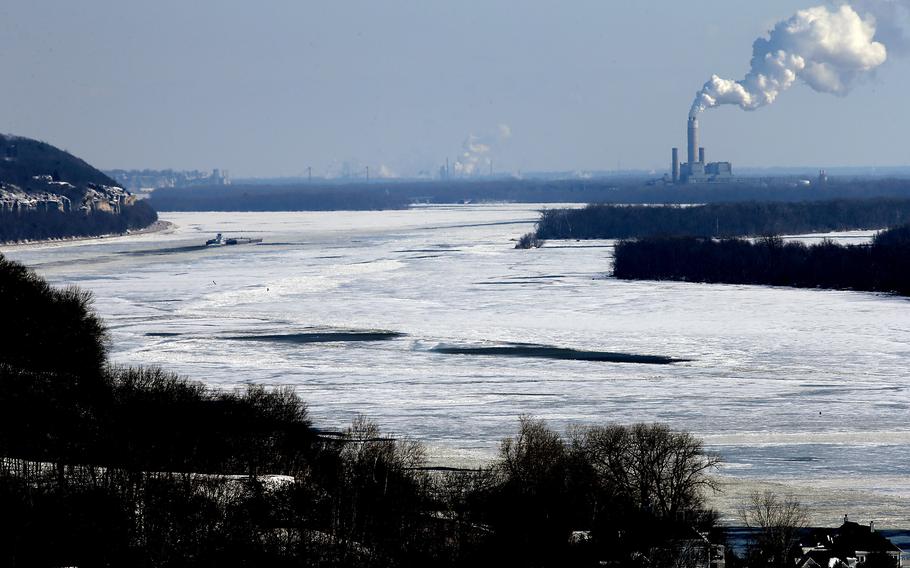
A tow barge enters the icy Mississippi River from the confluence with the Illinois River east of Grafton, Illinois on Friday, Feb. 12, 2021. “Serious concerns” over critically low water levels in the Mississippi River system led port authorities to limit vessel drafts near a key export hub on Friday, Oct. 21, 2022. (Robert Cohen/St. Louis Post-Dispatch/TNS)
“Serious concerns” over critically low water levels in the Mississippi River system led port authorities to limit vessel drafts near a key export hub, potentially adding a further headache for shippers already contending with delays and skyrocketing costs.
The depth of ships’ drafts, or the distance between the waterline and the deepest point of the boat, are now limited to 41 feet upriver of the port of Baton Rouge, the nation’s eighth-largest by tonnage, the U.S. Coast Guard said late Friday. That’s down from 45 feet, a level at which vessels are encountering problems as spreading drought in the U.S. midwest dries up the waterway, a critical freight artery.
The move is an attempt to head off possible safety hazards as shippers contend with a backlog of barges and ocean vessels tasked with picking up and delivering core commodities such as grains, petroleum, coal, metals and fertilizer. The Mississippi typically moves more than 500 million tons of freight a year valued at more than $100 billion, according to government data.
As of Saturday morning, there were four waterway closures on the river, the Coast Guard said, with a queue of more than 2,700 barges and vessels waiting at points in Mississippi, Tennessee, and Kentucky. On Friday, the Coast Guard said there were more than 1,800 barges and vessels stuck along the river because of low water levels.
The new draft limits apply to vessels moving to and from facilities upstream of mile marker 228, which includes Exxon Mobil’s massive Baton Rouge oil refinery, one of the nation’s largest. A shallower draft may also limit how much cargo can be put on ships carrying corn and soybeans from the U.S. to buyers around the world, further increasing the cost to export crops during the harvest season. The situation may get worse — the current forecast is calling for water levels to steeply decline further, according to the Coast Guard.
The U.S. Army Corps of Engineers has been dredging various sections of the Mississippi and Ohio rivers to open up the channels.
Diego Lasarte contributed to this report.
___
©2022 Bloomberg L.P.
Visit bloomberg.com.
Distributed by Tribune Content Agency, LLC.